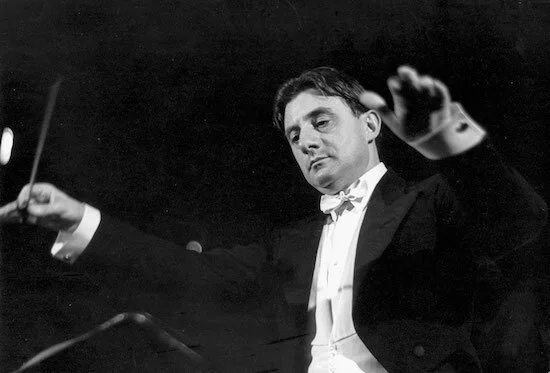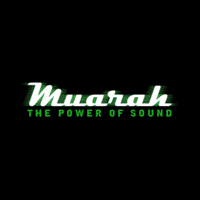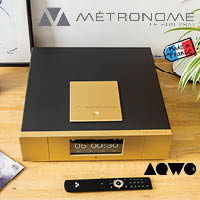Streaming the Classics: Sir John Barbirolli
Do you ever type a streaming query in Roon for a classical work or artist and are overwhelmed by the choices? Rather than clicking on any old recording or the first one you see, Audiophilia will make things a little easier for you and do the heavy listening.
These choices are for streaming only. Is the best in streaming also the best vinyl recording and performance? That’s for another article.
A few criteria:
Recording must be on Apple Music, Qobuz or Tidal HiFi.
It does not have to be HiRes or MQA.
No more than ten recommendations in no particular order.
Photo credit: Le Devoir
When Columbia released the first LP recording in 1948 of Beethoven's 5th Symphony conducted by Stokowski the floodgates opened on a golden age of recording which remains the backbone of most record companies' classical catalogues to this day.
When we think of the great English conductor, Sir John Barbirolli (1899-1970), it tends to be in association with Sir Adrian Boult and Sir Malcolm Sargent whose careers were largely contemporary.
On reflection, however, Barbirolli begins to stand out almost from the beginning as the belt and braces orchestral musician who came from a musical family and studied at Trinity College of Music, London from 1910-1912 and the Royal Academy of Music from 1912-1916 (I remember with affection spending hours in the Trinity library looking at his personal scores he bequeathed to the college, his blue pencil marks proving illuminating in many classic works).
Trinity College of Music, London Jerwood Library entrance with The Barbirolli Collection on the right.
Barbirolli learned his trade in the orchestra pits and salons of London town from 1916 and following war service, in the ranks of the LSO and Queens Hall Orchestra cello sections.
In 1919 he played the Elgar Cello Concerto with the LSO with Elgar conducting and also Elgar’s Dream of Gerontius at the Three Choirs Festival in 1920, so it is no surprise that these works became entwined in his conducting career.
He gravitated to the conductor’s stand in the opera house making his debut in 1926 with the British National Opera Company on tour in Newcastle and so impressed management that he was appointed Musical Director for the Covent Garden season of 1929. He had also conducted the LSO at short notice in Elgar’s 2nd Symphony in 1927 with cellist Pablo Casals as soloist on the same the programme, both Elgar works being no small feat to conduct at a few hours notice!
In 1932 he made his first contact with the Hallé Orchestra who needed to cover the absence of their then conductor Sir Hamilton Harty, and, together with Elgar, Beecham and Pierre Monteux, he shared the season.
By 1933 his career was moving along well and he was appointed to the Scottish Orchestra as conductor for their seasons until 1936 when out of the blue an offer to conduct the New York Philharmonic arrived, probably on the recommendation of Arturo Toscanini, another cellist turned conductor, who was then probably the most powerful maestro in the world.
It is at this point his story gets interesting from a historical viewpoint—often the stories get conflated as to what happened during the next seven years of Barbirolli’s life. I am basing my knowledge on what British composer Richard Arnell told me as he was the BBC music correspondent in New York for most of that time and knew Barbirolli well [Arnell was a journalist, film composer and Prof. of Composition at Trinity, and known to all of us as ‘Tony’—Ed].
Toscanini suggested Barbirolli as the New York Philharmonic replacement for him as he was going to join NBC who had promised him a crack orchestra and complete authority. This meant that Toscanini didn’t want any competition from Stokowski or Thomas Beecham who were lurking in the shadows hoping for a chance with the Philharmonic, so he thought Barbirolli a good, competition-free choice.
Both Arthur Judson, the manager of the New York Phil, and the orchestra members liked Barbirolli and when his performances were being hailed as just as good as Toscanini if not better, the knives came out.
Music critic Olin Downes and composer Virgil Thompson wrote disparaging articles but this only fuelled the rival factions and Barbirolli had many friends who wanted to see Toscanini taken down a peg or two. Beecham who always seemed to be absent whenever any mud was being thrown didn’t exactly help the situation by calling Toscanini ‘an appalling Italian band master’.
In 1940 the Philharmonic renewed Barbirolli’s contract for another two years but the winds of war were crossing the Atlantic and many performers had fled to Hollywood or Australia to escape the bombing of London and other British cities.
Lord Beaverbrook, owner of the Daily Express newspaper, decided to criticize those who had fled and Barbirolli’s name came up regularly as well as Laurence Olivier and Vivian Leigh, who Beaverbrook said had ‘Gone with the Wind Up!’, referring to the 1939 film which starred Leigh.
All this sniping bothered Barbirolli, so in 1942 he decided to return to London with his wife Evelyn (Rothwell, oboist) and support the war effort as Sargent and others were doing and receiving public praise. It was fate, however, the flight the Barbirollis were due to catch from Lisbon to London was filled by a party of journalists and the actor Lesley Howard (who had also starred in the film ‘Gone With the Wind’). It was shot down and never found.
The Free Trade Hall in Manchester, UK, where many of Barbirolli’s famous Hallé Orchestra recordings were made. It is now a Radisson Hotel.
Shortly after his return, Barbirolli was offered the chance to rebuild the Hallé Orchestra, which had been badly depleted due to war service. He spent the next 25 years honing its sound and from the early 1950s he embarked on a recording schedule that saw him record over 100 works from Beethoven to Bax. His major stereo recordings were made using both the Hallé and the Philharmonia Orchestra and he also recorded with the Berlin and Vienna Philharmonics, the RPO and the Czech Philharmonic.
He died in July 1970.
Here are ten of his most applauded recordings.
Over the last year Sony and Warners have released new boxes of Barbirolli covering the Columbia/New York Philharmonic years and his later EMI recordings. If you have these, you have most of the recordings he made from 1936 until 1970. However, he recorded some repertoire twice, often with the Hallé and later with the Philharmonia Orchestra. I have chosen the later stereo recordings for clarity.
1. Elgar - Cello Concerto and Sea Pictures. LSO Barbirolli with Jacqueline Du Pre and Janet Baker.
Probably the most famous recording of the work and certainly the most admired of Barbirolli’s recordings. His history with the piece and Du Pre’s passionate performance makes it an essential performance.
2. Elgar String Music. Sinfonia of London. Barbirolli. Allegri String Quartet.
This recording of the Introduction and Allegro for Strings coupled with the Serenade for Strings is one of, if not the finest recording these works have ever received [a member of the viola section on this famous EMI was Keith Cummings, pictured in the middle of the front cover, far right, viola teacher of the author of this post—Ed].
The Variations on a Theme of Thomas Tallis by Vaughan Williams was recorded at midnight in the Temple Church in Holborn, central London, and give the work its sense of mystery. A great aural document.
3. Elgar - Symphony No 1. Philharmonia. Barbirolli.
Recorded in 1961, this is his second recording of the work and the one that demands the most attention. A fine interpretation of this great symphony with sensitive attention to detail and a worthy competitor to any other performance currently available.
4. Elgar - Symphony No 2. Hallé Orchestra. Barbirolli.
Barbirolli wanted to show that his Hallé band could match the standards of the London orchestras and they give a good show if slightly lessened by the very dry acoustic of the Free Trade Hall.
5. Mahler - Symphony No 6. Philharmonia. Barbirolli.
Barbirolli’s ground breaking performances of Mahler in the 1950s and ‘60s put these works on the map for the first time with English audiences and his recording of the 6th is justly memorable. Despite a few orchestral fluffs, this is a performance of great stature.
6. Mahler - Symphony No 9. Berlin Philharmonic. Barbirolli.
Karajan was a fan of Barbirolli and gave him the ultimate accolade of allowing him to record Mahler 9 with the hallowed orchestra of the 1960s. Strangely, the playing has its flaws but the overall sound is glorious.
7. Tchaikovsky - Symphonies 4, 5 and 6. Hallé Orchestra. Barbirolli.
EMI started experimental stereo recording in 1956 and Barbirolli recorded these symphonies in Manchester at the Free Trade Hall, infamous because of its unflattering acoustic. They are powerful performances especially the 5th and the Hallé members really put their backs into the passion and drama. The sound is acceptable if rather thin at times but they show what a fine and musical conductor Barbirolli was.
8. Elgar - The Dream of Gerontius. Hallé Orchestra & Choir, Richard Lewis, Janet Baker, Kim Borg. Barbirolli.
Barbirolli’s interpretation of this work was unequalled during his lifetime and nearly 60 years later it still demands attention for the fine singing of Lewis and Baker and the excellent orchestra and chorus, who seemed inspired by the power of the performance (read my Audiophilia post, ‘Streaming the Classics/The Dream of Gerontius—Elgar’ here).
9. Sibelius - Symphony No 2. RPO. Barbirolli.
Barbirolli recorded a complete cycle of Sibeluis symphonies with the Hallé in the 1960s but was asked by Readers Digest to record the 2nd for their exclusive collections. The result is one of the most stunning performances ever recorded of this work and shows the orchestra and conductor off to magnificent effect. A must hear if you can! [If you can find this on the Chesky vinyl pressing, press ‘buy’ immediately. Rare and one of the finest LPs you can buy, both recording and performance—Ed].
10. Vaughan Williams - Symphony No 5. Barbirolli.
Barbirolli never recorded a cycle of Vaughan Williams symphonies despite giving the world premier of the 8th in the presence of the composer and enjoying Vaughan Williams’ accolade ‘Glorious John’. His performances of the ones he did record are another important musical document to hear and add to his formidable reputation.
It may seem from the above list of recordings that Barbirolli was mainly a British specialist but this couldn’t be further from the truth. He was indeed noted for his Brahms and Beethoven performances and also Dvořák and Viennese favourites. He was also equally at home in the opera houses of Europe and left a number of opera sets and excerpts which played to his Italian origins. Whichever streaming service you enjoy, I hope that you will find plenty to enjoy of this talented and beloved conductor.







































